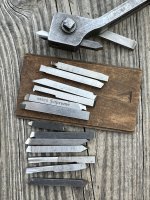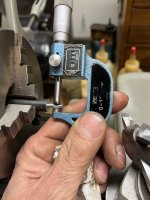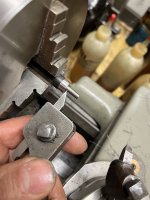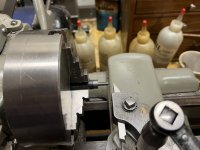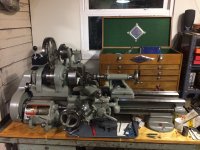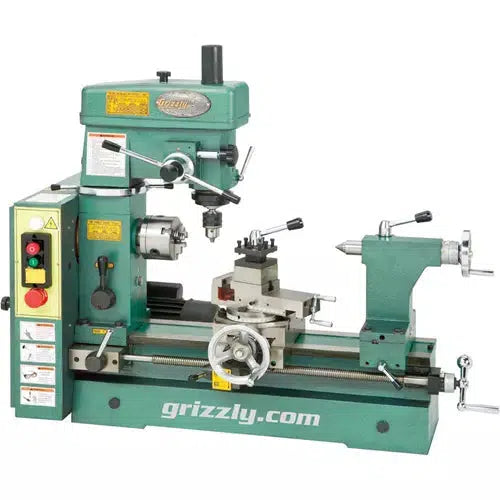After cutting a piece of (black) delrin to length, I installed it in this collet chuck. Some might say a collet chuck is the ideal way to hold this, but I'm really using it because it is what is on the lathe at the moment and I see no reason to change. If I'd had my 3-jaw or 4-jaw chuck installed on the lathe, both of those would have been fine for this job.
Generally speaking a collet chuck should work with a high degree of accuracy. Similarly a 4-jaw chuck (among other features) is capable of being adjusted very precisely. Most 3-jaw chucks are self-centering, so you don't have to adjust anything, but there's usually some loss of precision and you kind of get what you get. In this case it doesn't matter. Because I'll be turning the outside of the part to begin with, the cut part will end up being "perfectly" centered with the axis of rotation even if the outside of the raw material were off several thousandths.
A general rule of thumb is that you don't want the workpiece to stick out of the chuck more than about 3 diameters. This is a 0.25" (1/4") rod, so I wouldn't want to hang it out more than 3/4". BUT, less is always better in terms of rigidity. Since this is a thin part (0.135" thick), I'm sticking it out only far enough to be able to cut that much off, with some allowance for material that will be removed from either end as I make the piece.
View attachment 433034